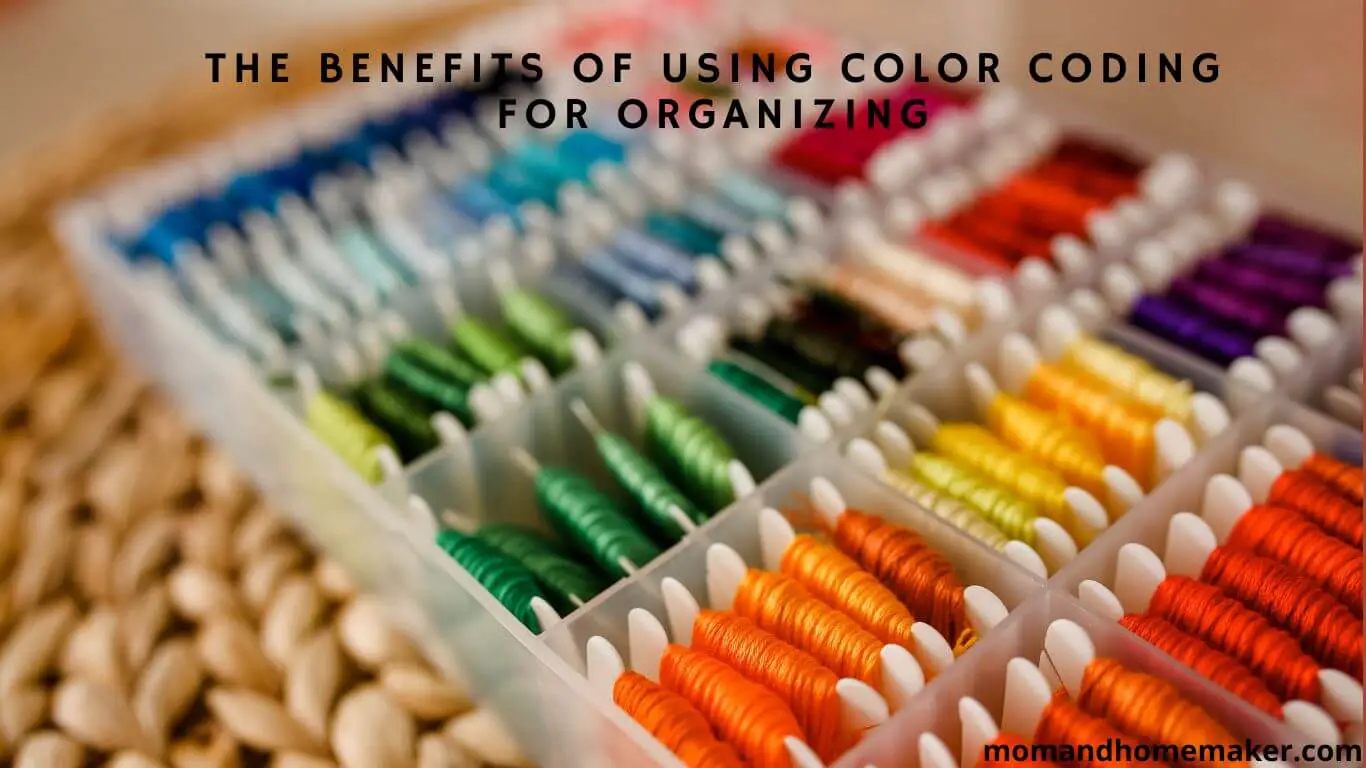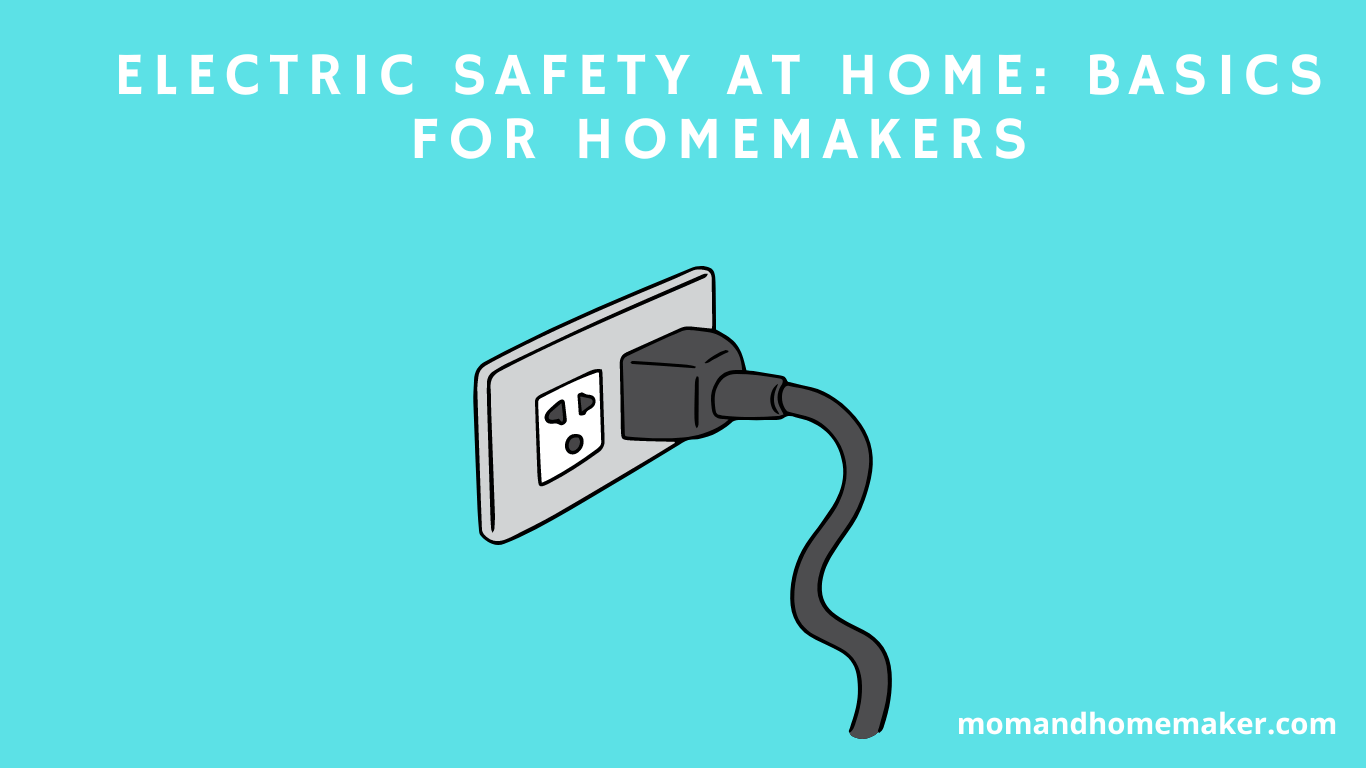Hey there! I wanted to talk to you about a technique that has been incredibly helpful for staying organized – color coding. Trust me, it’s a game-changer.
Instead of throwing everything together, I assign different colors to different categories or tasks. The benefits are amazing! It saves me time when searching for items, reduces stress and frustration, and keeps my workflow streamlined and productive. Plus, it even improves memory and recall.
Stick around, and I’ll share more perks of this customizable and flexible system. Let’s get organized together.

Time-Saving Organization
Color coding is a game-changer when it comes to saving time and staying organized. As someone who’s always looking for ways to improve my time management and organizational skills, I’ve found that implementing color coding systems is one of the most effective productivity hacks.
By assigning different colors to various categories or tasks, I can easily identify and prioritize my to-do list. These visual cues not only help me stay organized but also allow for a more efficient workflow.
For example, in my work schedule, I use different colors to represent different types of tasks or projects. This allows me to quickly see what needs to be done and allocate my time accordingly. Whether it’s a client meeting, a report deadline, or a personal task, the color coding system ensures that nothing falls through the cracks.
Not only does color coding make my schedule more visually appealing, but it also gives me a sense of control and confidence in managing my time effectively. It enhances my sense of belonging in both my work and personal life. This simple yet powerful technique has transformed the way I approach my daily tasks and has significantly improved my productivity.
Easy Retrieval of Items
Color coding is an effective way to organize and retrieve items easily. By assigning specific colors to different categories or groups, we can quickly locate what we need. The visual cues provided by the colors make it effortless to identify where things belong, resulting in easy access to the items we need.
Not only does color coding create an organized and visually appealing space, but it also streamlines workflow and promotes efficient retrieval. With color coding, there’s no need to waste time searching through cluttered drawers or shelves. Instead, we can simply look for the designated color and find what we need in seconds.
Implementing color coding in our daily lives can save us time and frustration. Whether it’s in our office, kitchen, or wardrobe, color coding helps us maintain order and structure, allowing us to focus on what truly matters.
Reduced Stress and Frustration
Color coding is a simple yet powerful technique that can make our lives easier and more organized. By assigning specific colors to different categories or types of items, we can streamline the process of locating and accessing what we need. Not only does this save us time and frustration, but it also has a positive impact on our overall well-being.
One of the main benefits of color coding is its ability to reduce stress and frustration. When everything has a designated color, we no longer have to waste precious time searching for misplaced items or sifting through cluttered spaces. Instead, we can quickly identify and grab what we need, allowing us to focus on more important tasks and boosting our productivity levels.
Furthermore, color coding helps us stay organized in a visually appealing way. The different colors act as visual cues, reminding us where each item belongs and making it easier to maintain order. This organized environment creates a sense of calm and control, reducing stress and frustration in our daily lives.
In conclusion, color coding is a valuable tool that not only helps us organize and retrieve items more efficiently but also has a significant impact on our well-being. By implementing this simple technique, we can experience reduced stress, improved organization, increased productivity, and enhanced focus.
Streamlined Workflow
Streamlining Workflow
Using color-coded systems can greatly enhance workflow efficiency. When it comes to managing your time and optimizing your workflow, color coding is an invaluable tool. By assigning specific colors to different tasks or categories, it becomes easier to track and prioritize them. This simple organization technique can lead to a significant boost in productivity.
Color coding allows you to quickly identify and locate the tasks that require your attention, saving you precious time. Instead of wasting time sifting through a stack of papers or scrolling through endless digital files, you can easily spot the color-coded tasks and tackle them in order of priority. This visual cue helps you stay focused and on track, ensuring that you meet important deadlines and nothing falls through the cracks.
In addition to time savings, color coding also helps you track your progress. As you complete tasks, you can visually see the progress you’ve made by the diminishing number of color-coded items. This sense of accomplishment motivates you to keep going and pushes you to be more productive.
Overall, incorporating color coding into your workflow can be a game-changer. It’s a simple and effective way to stay organized, manage your time efficiently, and optimize your workflow. Whether you choose to use colored folders, labels, or digital tags, I highly recommend trying this organization technique to streamline your workflow.
Quote: ‘Color coding has revolutionized the way I work. It’s incredible how such a simple technique can have such a profound impact on productivity.’ – [Your Name]
Enhanced Productivity
Incorporating color coding into my workflow has greatly improved my productivity. The use of color cues has increased my motivation to stay organized and focused on my tasks. By assigning specific colors to different categories or priorities, I can easily identify and manage my time more effectively. This eliminates the need to waste time searching for specific documents or information because everything is clearly labeled and color-coded.
Color coding has also improved my decision-making process. When faced with multiple options or tasks, the visual representation of different categories or deadlines helps me prioritize and make informed choices. This allows me to quickly assess the importance and urgency of each task, enabling me to make efficient decisions.
Furthermore, color coding has streamlined my workflow. By assigning specific colors to different tasks or projects, I can easily track my progress and see at a glance what needs to be done. This streamlined approach has reduced the chances of overlooking important tasks and has improved my overall organizational skills.
Improved Focus and Concentration
The use of color coding in my workflow has greatly improved my focus and concentration. By assigning different colors to categorize and organize my tasks, I can easily prioritize and identify what needs to be done, resulting in increased productivity. Color coding provides visual cues that help me stay focused on the most important tasks at hand.
Furthermore, color coding has also enhanced my ability to learn and retain information. By associating colors with different types of information or subjects, I can easily distinguish and remember them. This has been particularly beneficial when studying or researching, as the visual organization aids in information retention and recall.
In addition, color coding has improved my overall organizational skills. It allows me to quickly locate and access specific items or documents, saving me time and reducing stress. This streamlined approach to organization has positively impacted my efficiency and effectiveness in completing tasks.
Clear Visual Reminders
Color coding has proven to be incredibly helpful in maintaining clear visual reminders of important tasks and deadlines. By using visual cues and the principles of color psychology, it has greatly improved my organization techniques. Assigning different colors to various categories or priorities allows me to quickly identify what needs my attention. This method has become one of my favorite visual aids for staying on top of my responsibilities.
Color coding taps into the power of color psychology, which suggests that different colors evoke different emotions and stimulate different parts of the brain. For instance, I use red to represent urgent tasks that require immediate attention, while green signifies tasks that are on track or completed. This simple system not only helps me prioritize my to-do list but also gives me a sense of accomplishment when I see a row of green tasks.
In addition to serving as visual reminders, color coding is also a productivity hack. With just a quick glance, I can determine the overall status of my tasks and deadlines, enabling me to make informed decisions about where to focus my energy and time. No longer do I need to sift through a cluttered list or calendar; the colors provide a clear and concise snapshot of my priorities.
Efficient Task Prioritization
To effectively prioritize tasks, I rely on color coding as a simple and efficient method. By assigning different colors to various tasks, I can visually distinguish their importance and urgency. This allows me to quickly identify which tasks require immediate attention and which can be tackled later. Color coding also helps me stay focused and organized, as it provides a clear visual reminder of the tasks at hand.
One of the techniques I use for prioritizing tasks is assigning red to high-priority tasks that need to be completed urgently. These tasks could be time-sensitive deadlines or crucial projects that require immediate attention. On the other hand, I assign yellow to medium-priority tasks that are important but not as time-sensitive. These could be ongoing projects or tasks with flexible deadlines.
By using color coding as part of my time management strategies, I can effectively manage my tasks and ensure efficient task completion. It allows me to prioritize my workload and allocate my time and resources accordingly. This not only helps me stay organized but also ensures that I’m focusing on the most important and time-critical tasks first.
In addition to prioritizing tasks, color coding also helps in efficient workflow management. It allows me to visually map out my day and see how different tasks are interconnected. This helps me identify any dependencies or bottlenecks and make necessary adjustments to optimize my workflow.
Effective Project Management
To effectively manage projects, I rely on color coding to visually organize and prioritize tasks. Color coding allows me to assign different colors to various categories, making it easier to identify and delegate tasks.
By utilizing color coding, I can quickly see which tasks are assigned to specific team members, ensuring efficient task delegation. It also aids in resource allocation, as I can easily identify which tasks require more resources and allocate them accordingly.
Furthermore, color coding assists in project tracking. With a glance, I can assess the progress of each task based on the color assigned to it. This helps me identify any bottlenecks or delays in the project and take necessary actions to keep it on track.
Moreover, color coding facilitates team coordination. By assigning colors to different team members, everyone can easily identify their tasks and responsibilities. This promotes a sense of belonging and encourages collaboration among team members.
Lastly, color coding plays a crucial role in deadline management. By assigning colors to different deadlines or milestones, I can easily identify upcoming or overdue tasks. This allows me to prioritize and allocate resources accordingly to meet project deadlines.
Simplified File and Document Organization
Using color coding is a simple and efficient way to organize files and documents. It not only saves time but also brings order and effectiveness to the process.
By utilizing color coding techniques, important documents can be easily categorized and located within seconds. This method of organization has been a game-changer for me, especially when it comes to managing time effectively.
In addition to color coding physical files, I’ve also embraced paperless organization. By making use of digital organization tools, I can effortlessly store and retrieve documents without the hassle of dealing with physical copies. This not only saves space but also reduces the risk of losing important papers.
When it comes to organizing files and documents, I’ve discovered a few tips that have proven to be incredibly helpful.
It’s recommended to create a consistent color system. Assign specific colors to different categories or subjects, making it easier to visually identify and retrieve documents.
Second, make use of digital organization tools such as cloud storage or document management software. These tools make it seamless to access and organize files across multiple devices.
Lastly, regularly declutter and remove unnecessary documents to maintain a streamlined and efficient system.
Quick Identification of Categories
Color coding is a simple yet effective method for organizing files and documents. It allows for quick identification of different categories, improving organization efficiency. By assigning specific colors to each category, you can easily differentiate between types of files and documents at a glance.
For example, you can assign the color blue to financial documents, green to client files, and red to important deadlines. This color coding system provides visual cues that help you locate and retrieve information more efficiently, saving you valuable time and effort. Instead of rummaging through a disorganized stack of papers, you can instantly recognize the category of a document based on its color.
Color coding promotes consistency in your filing system. When you see a file with a specific color, it serves as a reminder to place it in the correct category. This prevents misplacement or misfiling of important documents, ensuring that everything is organized in the most efficient way possible.
Better Collaboration and Communication
Color coding is a valuable tool that promotes effective collaboration and communication within teams. By using color coding techniques, we can easily identify and understand shared files and documents, saving time and ensuring that everyone is on the same page.
Assigning specific colors to team members or departments allows for clear accountability and encourages active participation from all team members. This fosters improved teamwork and coordination, making it easier to work towards common goals.
Color coding can be used to highlight important deadlines or priority tasks, preventing anything from slipping through the cracks.
Increased Efficiency in Group Settings
Implementing color coding techniques in group settings can simplify processes and improve productivity.
When working in a group, effective collaboration and teamwork are essential for success. Color coding offers a visual aid that fosters better communication and coordination among team members.
By assigning specific colors to tasks or categories, everyone can easily identify their responsibilities and track the project’s progress. This not only enhances group dynamics but also streamlines decision-making.
With color coding, prioritizing tasks and allocating resources becomes easier, enabling the group to make informed decisions quickly and efficiently. Moreover, color coding enhances group productivity by reducing confusion and minimizing errors.
When everyone is on the same page and can easily differentiate between elements, there’s less room for mistakes and misunderstandings. This leads to smoother workflows and faster task completion.
Improved Memory and Recall
Color coding is a useful technique for improving memory and recall. By using color-coded notes and visual organization methods, we can enhance our ability to retain information and make it easier to remember.
Scientific research has shown that color coding has cognitive benefits because it helps our brains create stronger associations and connections between different pieces of information.
When we color code our notes, we create a visual system that aids our brain in processing and recalling information. For example, assigning different colors to different topics or categories makes it simpler to find specific information later on. This visual organization assists our brains in retrieving information more efficiently, saving us time and effort.
Furthermore, color-based mnemonics can be powerful tools for memory improvement. By associating specific concepts or ideas with different colors, we establish strong mental connections that aid in recall.
For instance, if we associate the color red with important dates, simply seeing a red marker or highlighter can instantly trigger our memory and help us remember those dates more easily.
Simplified Inventory Management
Managing inventory becomes easier and more efficient when using color coding. By assigning specific colors to different categories or types of items, you can simplify tracking and organization, leading to improved visibility and optimized storage. With a glance, employees can quickly identify where each item belongs, saving time and effort.
To understand the benefits of color coding in inventory management, let’s consider the following table:
| Category | Color Coding |
|---|---|
| Electronics | Blue |
| Clothing | Red |
| Office Supplies | Green |
| Furniture | Yellow |
With this color coding system in place, it becomes effortless to locate and retrieve items. For example, if an employee needs to find a piece of furniture, they can simply look for the items with yellow coding. This not only improves accuracy but also increases productivity by saving time and reducing errors.
Enhanced Creativity and Inspiration
To boost creativity and inspiration, I’ve discovered that using color coding in the organization can be a game-changer. The benefits of color coding for creativity are truly remarkable. When I started organizing my workspaces and materials using vibrant colors, I immediately noticed an increase in my ability to think outside the box.
The colors stimulated my imagination and allowed me to generate fresh and innovative ideas. It was as if the colors infused my surroundings with energy and inspiration.
Equally impressive are the advantages of color coding for inspiration. The visual cues provided by the colors helped me stay focused and motivated. Each color represented a specific task or category, making it easier for me to navigate through my projects.
This streamlined approach boosted my innovation since I could quickly locate what I needed, allowing me to devote more time to creating rather than searching for materials.
Moreover, color coding improved my artistic expression. The harmonious arrangement of colors created a visually appealing environment that reflected my unique style and personality. This aesthetic enhancement further fueled my creativity, enabling me to express myself freely and authentically.
Customizable and Flexible System
When it comes to organizing, I’ve found that creating a customizable and flexible system is crucial for success. By allowing individuals to personalize their organizational methods, it fosters a sense of belonging and ownership. The ability to tailor the system to one’s preferences and needs enhances the overall efficiency and effectiveness of the workflow.
A customizable organization system enables individuals to prioritize tasks in a way that works best for them. By assigning specific colors to different categories or priorities, it becomes easier to visually identify and tackle tasks accordingly. This not only helps in effective prioritization but also ensures that important deadlines are met without any confusion or delay.
Moreover, a flexible system allows for easy adaptability in a dynamic work environment. As priorities shift or new tasks arise, the color coding system can be easily adjusted to accommodate the changes. This ensures that the organization remains fluid and responsive, leading to a simplified management process.
Conclusion
Color coding is a highly effective method for organizing your life. It not only saves you time but also reduces stress and frustration by simplifying your workflow.
With easy retrieval and improved memory, you’ll be able to boost your productivity. The customizable and flexible nature of color coding allows for enhanced creativity and inspiration.
Start implementing color coding techniques and witness the positive impact it has on your organized and stress-free life.
















